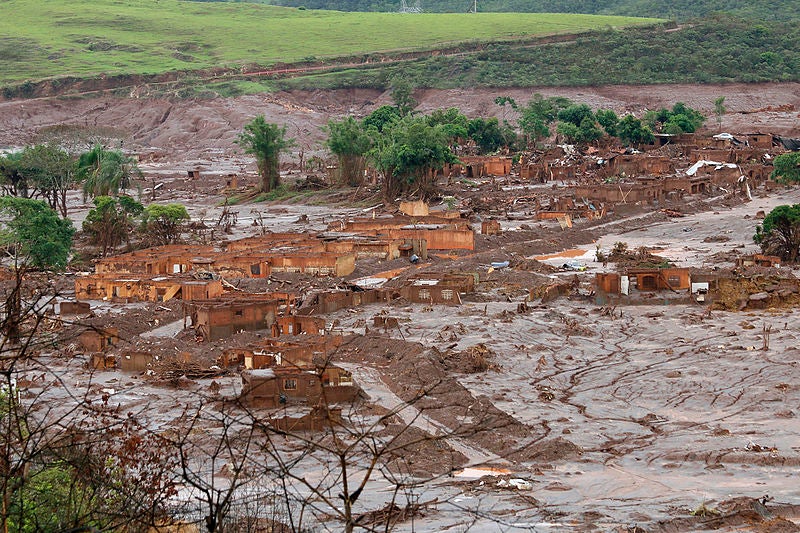
The death count due to a collapsed dam at Vale’s Córrego do Feijão iron mine in Brazil has increased from 37 to 58 in two days after the collapse of the mine’s dam that unleashed a mudslide on the local town of Brumadinho.
When the dam burst on Friday, around 430 people were working in the mine that is located in the southeastern state of Minas Gerais.
According to Civil Defense spokesperson Col. Flavio Godinho, around 360 people have been found and 305 continue to be missing. Officials have said they are pessimistic that the lost victims will be rescued.
A total of 23 people have been hospitalised and of these, 19 victims have been identified.
Authorities are still assessing the extent of damage, especially in Brumadinho, which is almost buried under mining waste.
On Sunday, the authorities temporarily halted rescue operations due to heavy rains. They placed around 3,000 people under evacuation orders over concerns of a rupture risk at another dam located nearby. The evacuation orders were halted only when the authorities ascertained that the dam was not at risk of a rupture.

US Tariffs are shifting - will you react or anticipate?
Don’t let policy changes catch you off guard. Stay proactive with real-time data and expert analysis.
By GlobalDataAuthorities expect to restrict the flowing of the sludgy mine waste, called tailings, within two days. The Brazilian National Water Agency is monitoring the tailings due to its high toxicity, and its potential to seep into local water sources. The agency is supplying water to the affected region.
The scale of the destruction has prompted a swift response from Vale, with CEO Fabio Schvartsman calling the incident “inexcusable”, and pledging to tighten safety across the company’s operations.
“It seems to me that there is only one solution: we have to go beyond any standard, national or international,” said Schvartsman. “We are going to create a safety mattress that is far superior to what we have today.”
While Schvartsman has dramatically improved Vale’s financial performance since taking over in 2017, with share prices increasing by 50% over his tenure, the latest disaster demonstrates that the company’s safety performance needs improvement. The company’s shares dropped 8% on Friday as news of the disaster broke.
Greenpeace Brazil stated that Vale’s “corporate greed” and “the omission and inefficiency” of the Brazilian government were the reasons behind the Brumadinho disaster, and a similar incident at Samarco in 2015.
Four years ago, Vale’s Samarco dam, also in Minas Gerais, collapsed, killing 19 people and unleashing a mixture of mud and tailings into the state’s rivers and waterways. The toxic waste had a total volume equal to 25,000 Olympic swimming pools, and is considered to be among the worst environmental disasters in Brazil’s history.
While the scale of the Brumadinho disaster is smaller, with the collapsed dam holding 12 million cubic metres of mining waste, as opposed to the 55 million at Samarco, the more recent disaster has a higher immediate cost to human life.
Samarco is a joint venture between Vale and BHP Billiton. In 2016, Samarco agreed to pay up to $6.2bn for damages to local people and the environment.
Additional reporting by JP Casey



